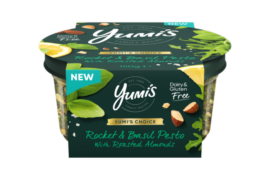Are you the owner of two or more dogs? Do you find your dogs are friendly towards each other or are they competitive? Apparently, how they relate with each other gives an insight into how they will react in certain situations.
Dogs learn a lot from their owners and other dogs in the house. How they respond to each other determines how they will respond to conditions that require quick thinking.
In previous studies conducted to understand the social influence of dogs and its impact on their learning, a highly trained demonstrator dog was used. This dog was unfamiliar to the other dogs, however, so the dynamics that take place between dogs that live in the same household is not known.
To understand this interaction, researchers travelled to 37 two-dog households to test the dogs in their own homes.
The dog owners were asked to fill out a survey known as the Canine Behavioral Assessment and Research Questionnaire (C-BARQ). This enables the researchers to classify how competitive the dogs were towards each other. Dogs that were classified as low rivalry never or rarely displayed aggressive behaviour towards each other while dogs that displayed some level of aggression especially near valuable resources were classified as high-rivalry.
The dogs participated in a simple task, to test the dynamics of rivalry between them.
=Q=
A research assistant placed two plates of food in front of each dog. One dog was allowed to approach the food and eat the food from plate before being walked out. At this point, the second dog was allowed to make a choice. If the second dog followed the first dog, it would come to an empty plate. But, if the second dog did not follow the first dog, then he went straight to the plate with food in it.
Dogs in the low-rivalry class tended to follow the first dog and frequently arrived at an empty plate. However, this only happened when the second dog was allowed to make a choice immediately. When there was a 5-second delay before the dogs made a choice, both low-rivalry and high-rivalry dogs tended to go directly to the plate of food.
This suggests that low-rivalry dogs tend to follow the other dog in the household but, when they were forced to wait for 5 seconds, the dogs seemed to think about the situation and then make a choice.
The scientists also ran another test where the food was removed from one plate by a human before the dog made a choice. Interestingly, low-rivalry dogs tended to follow the human demonstrator when there was no delay, which was the same behaviour when there were dog demonstrators.
Since low-rivalry dogs tended to follow the human demonstrator and the dog demonstrator, the researchers suggested that this may have something to do with the personality of low-rivalry dogs.
Accordingly, the competitiveness behaviour in dogs may be attributed to the personality of the dog and extends beyond the relationship with other dogs. Compared to low-rivalry dogs, high-rivalry dogs may have less tolerance to pay attention to other dogs in their proximity.
There is a variation in how dogs make decisions and the dynamics of their interaction determines how they will react in quick-thinking situations.
So having high-rivalry dogs would mean that the dogs are less likely to follow their owners or other dogs and more likely to think for themselves, while low-rivalry dogs will follow other dogs or owners.
What kind of dogs do you have?
Source: Animal Cognition











